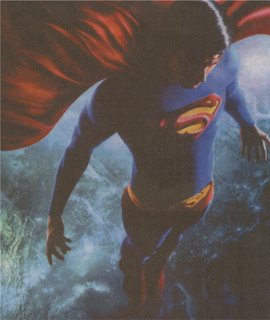Below is an insightful article by Ian Houlihan from the June 19, 2006 issue of The Chronicle of Higher Education. The author is a professor in the social sciences at a Catholic university in the US. He is also a gay man.
I read this article with great interest as, like the author, I'd taught for a number of years at a Catholic college where it was common knowledge that I was gay. Indeed, my teaching position was secured, in large part, by a presentation I had made on campus as a graduate student - a presentation which explored the coming out process as a spiritual journey.
In his article, Houlihan addresses a number of important issues – from college-age students’ attitudes towards homosexuality, to what the art of teaching is really all about. It’s an important and thought-provoking article and I thank my friend Sally for bringing it to my attention.
I do, however, have one quibble with it. At one point Houlihan states: “There is a difference between being comfortable with your sexuality and being an activist.” Actually, I’d say that being comfortable with one’s sexuality, and letting people know you’re comfortable, is a form of activism.
It troubles me when people shy away from being identified and/or described as an “activist.” Why do people do this?
Well, “activist” is clearly a code word in conservative circles for intolerant extremism, which when you think about it, is kind of ironic. I mean the activists I know within the justice and peace movement and within the Catholic Church around gay rights issues, are the most open and tolerant people I know. It’s our detractors’ views that come across as rigid, narrow, uninformed, and exclusionary.
As followers of Christ I believe we’re called to live lives of action. I understand such a life as an activist life. We’re called to take action. After all, God’s transforming love can only go out into the world through our words and actions. As Mother Theresa once famously said: “God loves the world through us – you and me.”
It’s time we take back the word “activist.”
Okay, enough of my rambling on, here’s Houlihan’s article:
__________________________________________
The Ins and Outs of the Closet
By Ian Houlihan
The Chronicle of Higher Education
June 19, 2006
“That's so gay,” the student said. “I mean, weird.” He corrected himself quickly, with obvious discomfort. Clearly, he suspected something.
“Why did you say it that way?” I asked, in what I hoped was a lighthearted manner. I figured it was as good a time as any to have a serious discussion about my personal life.
“I'm trying not to do that anymore – to say ‘gay’ when I mean ‘odd’ or ‘weird.’ People do that all the time. Someone might be offended.”
“You’re right that some gay people take offense to that,” I said. “But I know what you meant.”
Jason’s reaction was a mixture of shock and confusion. I could only guess what was running through his mind: Did my professor just come out to me? Or did I misunderstand him. Oh, man, this is gay. I mean, weird. Or both.
It wasn’t clear to me that he knew what I was saying, and forcing the issue might make the situation worse, particularly if he were bothered by it. The fact that he quickly changed the subject made me wish I hadn’t brought it up at all.
That was not the first time my sexuality came to the fore in my role as a professor in the social sciences at a Roman Catholic university. Last winter at a social engagement, a student told a staff member that she thought I was bisexual. And there were two encounters with gay students. The first occurred during my first semester at the university. It was an accidental, and at the time harrowing, encounter at a gay bar. The second, in an online chat room, was equally awkward but a bit less disconcerting.
It’s not that I wished to hide my sexuality from my students or that I would ever lie about it, but I just didn't see the need to be open about it, especially since there was no one special in my life.
Even so, I am rather surprised that more people at the university do not know since it’s not a large campus, and people love to talk. I've always felt that knowledge about my sexuality was like a snowball rolling down a hill. Every semester, each class, students would become more curious and, most likely, acquire more information about me. In addition to being “thin and neat” (for you Seinfeld fans), I am single and in my mid-30s. How many witty retorts can I give to the question, “Why aren’t you married?”
The incident with Jason occurred during a recent conference in New York. Our group was able to save on the cost of a room (for four nights) by having one of the students stay with me. Since I envisioned my room would be our default headquarters, I didn’t think it would be much of an inconvenience to have one of them sleep there. I also felt a tad guilty for the fact that students had to pay their own way, when so many other groups were financing the trip on their university’s dime. I was willing to do whatever possible to cut costs. I selected a student roommate (Jason) with whom I had a decent amount of familiarity.
He and I went out to lunch on the first day, and we talked about how his classes were going, his plans for after graduation, and family life. It turns out that we had similar experiences with our fathers. Mine was an alcoholic who regularly hit my mother – before she gathered the will to leave him. His was a drug user who is now incarcerated. Things had gotten so bad that he thought it necessary to change his last name.
“Don’t tell anyone,” he pleaded. “No one knows.”
“Of course,” I said. “I’m glad you felt comfortable telling me. I’m sure your friends would be supportive if you were to tell them.”
“Yeah, you’re right,” he said. “It's just a lot to deal with.”
We also talked about the troubles he had with his former girlfriend. They had dated all though college but had grown apart. It was the first time since his early teenage years that he was not involved in a serious relationship, and he was looking forward to meeting new people and starting his career.
“What about you?” he asked tentatively.
“Well, I've had a couple serious relationships. But I moved twice for school and for work to come out here, so it's been tough.”
“Nothing in four years, eh?”
“Not really,” I responded somewhat dismissively.
I could tell he was dissatisfied with what I shared with him. And the conversation soon turned to issues related to the conference.
It was not until his “That’s so gay” comment that I could revisit the issue and explain myself more openly, however unsuccessful I was. Thankfully, it was not the last that was said on the issue. Later that night, a few of us met at a nearby bar for food and drinks. After dessert, Jason found me at the jukebox. “Hey, I have a question.”
I could tell by the tone of his voice that it was something serious. “Shoot,” I said, glancing over his shoulder to gauge the distance between us and the rest of the group.
“Were you trying to tell me something earlier? I mean, I think I understood what you meant.”
“Yes, I was.” I took it as a good sign that he brought it up, but I wasn't sure how much he wanted to talk about it. “Are you OK with it?”
“Yeah, sure,” he said quickly. “A couple of years ago, I don't know. But I'm different now.”
It turns out that Jason was from a small town with small-town prejudices. It was not until he started college that he knew diversity of any kind. The dialogue I started with him became a teaching moment, as we discussed his background and how he has changed – or grown, he could have said – as a person.
Jason would later tell me that he was not surprised about my revelation. Others, too, he informed me, had suspected as much. A couple of my “favourites” have had lingering questions. I have since had discussions with a couple of them, and I'm supposing it's only a matter of time before the fact that I’m gay is common knowledge on the campus.
The truth is that the vast majority of young people could not care less about the sexual orientation of their professors. Those students who are put off by gay faculty members will have to learn tolerance, if not acceptance, if they are to succeed in their professional lives.
Others might find the idea of a professor being open with students about his sexuality objectionable for its political implications. “Our students need to be rescued from the liberals who have taken over the academy” is a common refrain from such circles.
But there is a difference between being comfortable with your sexuality and being an activist. More to the point, those who think students’ minds are so easily shaped have obviously not spent too much time with today’s young people. And those who think personal lives should be kept out of the classroom ought to try for one week to refrain from telling stories about their spouses, children, and friends. Only then would you realize how absurd such avoidance can become.
Given how difficult coming out can be, I would never judge someone who decides to dissemble or even deny their sexual orientation. Nevertheless, my admission to certain students, however minimal, has made me realize how misguided, and even silly, I had been about wanting to keep my sexuality from my students. Although the stories vary greatly, if there is one constant about coming out it is that the manner in which we let it be known determines to a large extent the reaction that others will have.
In his remarkable book The Courage to Teach, Parker J. Palmer contends that “we teach who we are.” His approach is unique for its ability to consider technique as incidental, if not altogether irrelevant, to success in the classroom. Teaching is more about creating and sustaining an open and mutually supportive dialogue than it is about grading rubrics, research competency, or integrative technology.
I never wanted to be “the gay professor,” but I especially don't want to be the shameful one. That is not the kind of person I am, and that is certainly not the kind of teacher I want to be. The closet is a dark, lonely, and, for the most part, unnecessary place, and it’s not a particularly good place to teach.
Ian Houlihan is the pseudonym of a professor in the social sciences at a Catholic university in the Northeast. He considered using his real name, but he's not ready for that sort of large-scale public admission. Yet.










































































